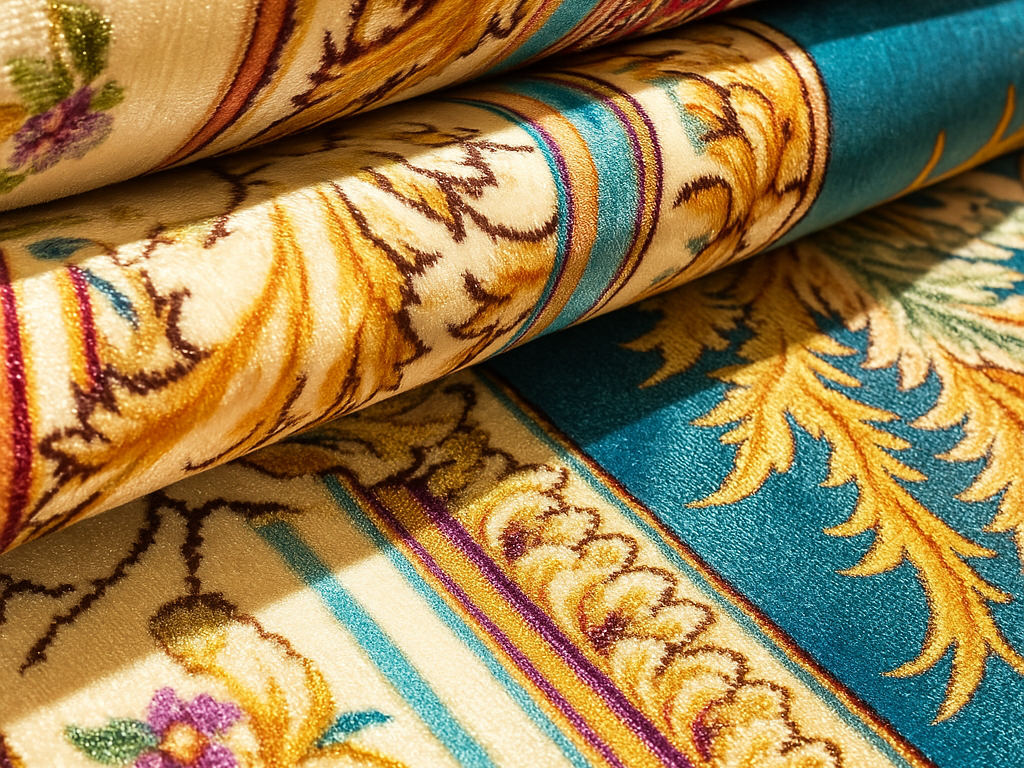Carpets add warmth and comfort to our homes, but they also accumulate dirt, stains, and allergens over time. While professional cleaning services can be costly, with the right tools and techniques, you can achieve professional-quality results on your own. This comprehensive guide will walk you through the process of shampooing your carpet at home, ensuring it looks fresh and extends its lifespan.
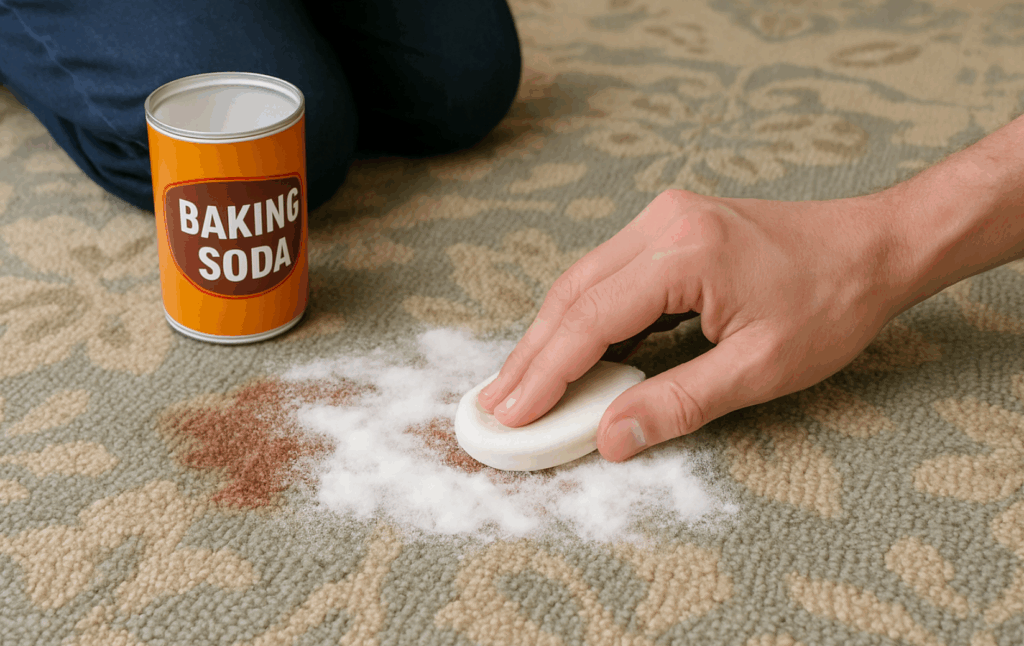
1. How Often Should You Shampoo a Carpet?
The frequency of carpet shampooing depends on various factors such as foot traffic, presence of pets or children, and overall cleanliness.
- High-Traffic Areas: In spaces like hallways or living rooms with heavy foot traffic, aim to shampoo your carpet every 2 to 3 months.
- Moderate Traffic: For areas with moderate use, shampooing every 4 to 6 months is sufficient.
- Low-Traffic Areas: In bedrooms or less frequently used rooms, once a year may be adequate.
Regular vacuuming between shampooing sessions is essential to remove surface dirt and prevent buildup.
2. What can You Use to Shampoo Your Carpet?
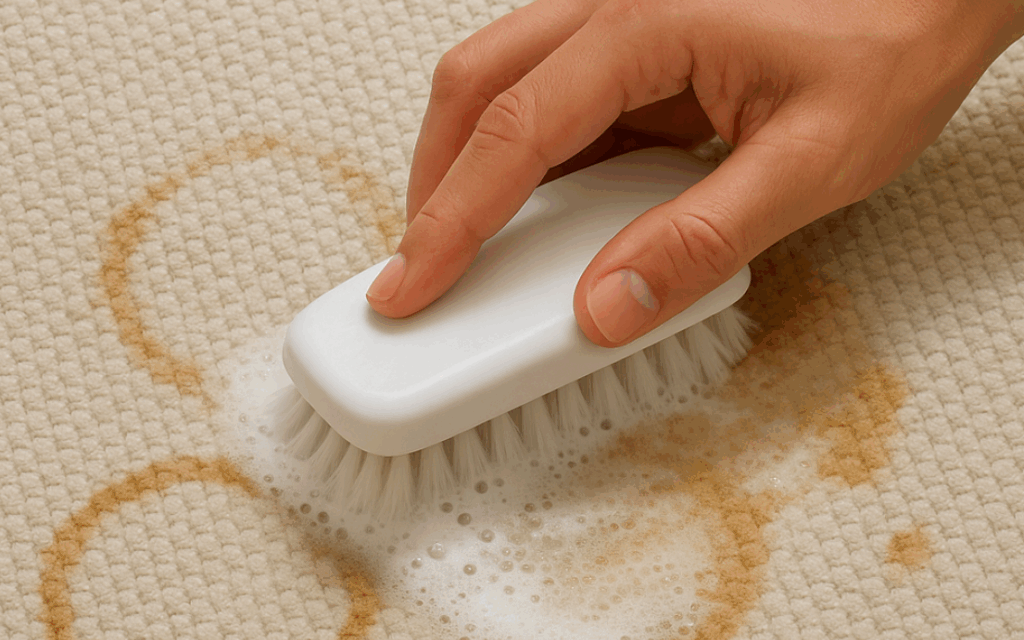
You have several options when it comes to carpet cleaning solutions:
- Store-Bought Carpet Shampoos: These are formulated specifically for carpet fibers and can be used with carpet cleaning machines.
- Homemade Solutions: A mixture of white vinegar and water can effectively clean carpets. For instance, combining equal parts of vinegar and warm water in a spray bottle can help remove dirt and odors.
- Dish Soap and Water: A few drops of dish soap mixed with warm water can serve as a gentle cleaning solution. However, ensure to rinse thoroughly to avoid soap residue.
- Baking Soda and Hydrogen Peroxide: This combination can tackle tough stains. Mixing baking soda with hydrogen peroxide creates a paste that can be applied to stains, left for a few minutes, and then blotted away.
Always test any cleaning solution on a small, inconspicuous area of the carpet to ensure it doesn’t cause discoloration or damage.
3. Can You Shampoo Your Carpet at Home?
Absolutely! With the right equipment and cleaning solution, you can shampoo your carpet at home effectively. Many homeowners opt for DIY carpet cleaning to save money and have control over the cleaning process.
However, it’s crucial to follow proper techniques to avoid common mistakes such as over-wetting the carpet, leaving soap residue, or not allowing sufficient drying time.
4. How to Shampoo Your Carpet at Home: Step by Step
Shampooing your carpet at home can seem daunting, but with the right approach and tools, you can achieve professional-looking results. Here’s an extended, detailed guide to help you through the process:
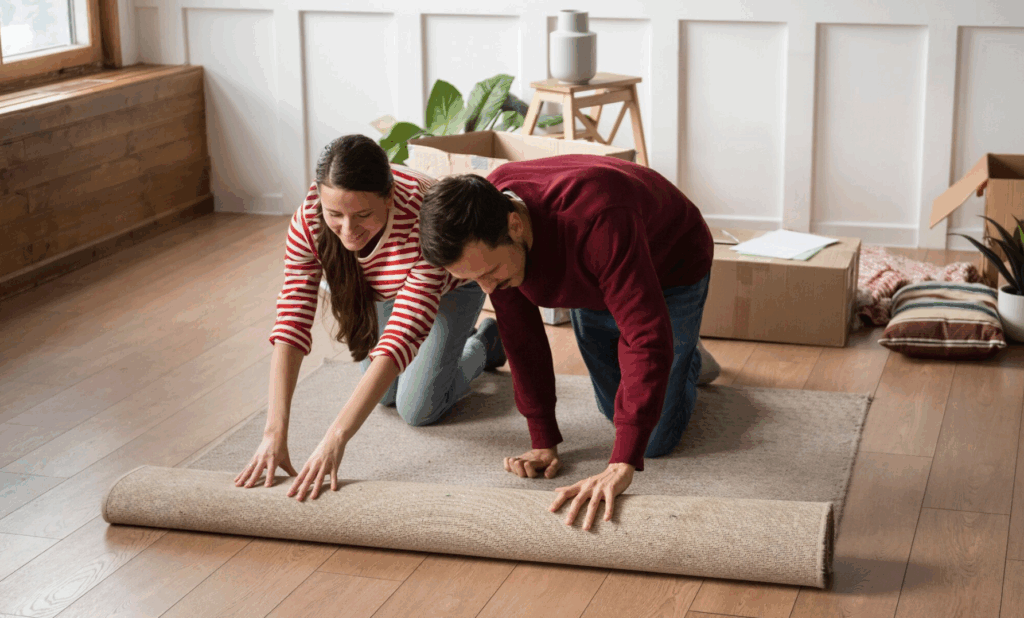
4.1 Carpet Shampooing Tools & Supplies
Before you begin, ensure you have the following tools and supplies:
- Carpet Cleaning Machine: A rental or purchased machine designed for home use.
- Vacuum Cleaner: For initial cleaning and post-shampoo drying.
- Carpet Shampoo: Choose a product suitable for your carpet type.
- Stain Remover: For pre-treating stubborn stains.
- Clean Towels or Rags: For blotting and drying.
- Gloves: To protect your hands from cleaning agents.
- Fan or Dehumidifier: To aid in drying.
- Measuring Cup: For accurate mixing of cleaning solutions.
- Spray Bottle: For applying stain removers or homemade cleaning solutions.
4.2 Choose the right Carpet Shampoo
Selecting the appropriate carpet shampoo is crucial for effective cleaning:
- Type of Carpet: Ensure the shampoo is compatible with your carpet material (e.g., wool, synthetic).
- Cleaning Method: Choose between liquid shampoos, foam cleaners, or dry powders based on your machine’s capabilities.
- Stain Type: Some shampoos are formulated to tackle specific stains like pet urine or wine.
- Eco-Friendly Options: Consider biodegradable and non-toxic shampoos, especially if you have children or pets.
- Concentration: Follow the manufacturer’s instructions for dilution to avoid residue buildup.
4.3 Step by Step Guide
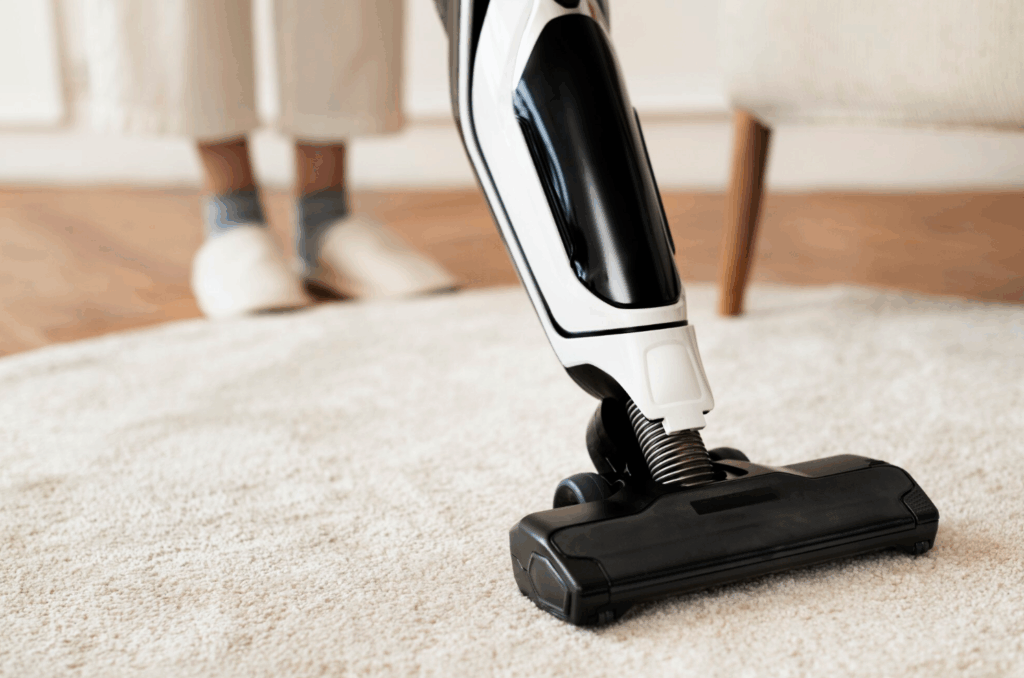
Step 1: Remove Furniture
Clear the room of all furniture to ensure every part of the carpet is accessible. If moving large items isn’t feasible, place protective materials like aluminum foil or plastic under furniture legs to prevent water damage.
Step 2: Vacuum Thoroughly
Before shampooing, vacuum the carpet to remove loose dirt and debris. This step prevents dirt from turning into mud during cleaning and ensures the shampooing process is effective.
Step 3: Pre-Treat Stains
Identify any stains and apply a suitable stain remover. Allow it to sit for the recommended time, then blot with a clean cloth. Avoid rubbing, as this can spread the stain.
Step 4: Prepare the Carpet Cleaning Machine
- Fill the Reservoir: Mix the recommended amount of carpet shampoo with warm water in the machine’s reservoir.
- Test the Solution: Before applying to the entire carpet, test the solution on a small, inconspicuous area to ensure it doesn’t cause discoloration.
Step 5: Shampoo the Carpet
- Start at the Farthest Corner: Begin in the corner farthest from the door to avoid walking on the freshly cleaned carpet.
- Overlap Strokes: Move the machine slowly in straight lines, overlapping each pass to ensure even cleaning.
- Avoid Over-Wetting: Do not oversaturate the carpet; excessive moisture can lead to mold growth.
Step 6: Rinse (If Necessary)
Some cleaning solutions may require a rinse cycle. If so, refill the machine with clean water and repeat the shampooing process to remove any residue.
Step 7: Dry the Carpet
- Ventilate the Room: Open windows and doors to promote airflow.
- Use Fans or Dehumidifiers: Place fans or a dehumidifier in the room to speed up the drying process.
- Avoid Walking on the Carpet: Do not walk on the carpet until it is completely dry to prevent dirt from being tracked in.
5. Tips to Maintain Carpets after Shampoo
Proper maintenance following a carpet shampooing session is essential to ensure the longevity and cleanliness of your carpet. Here are some expert-backed tips to help you maintain your carpet effectively:
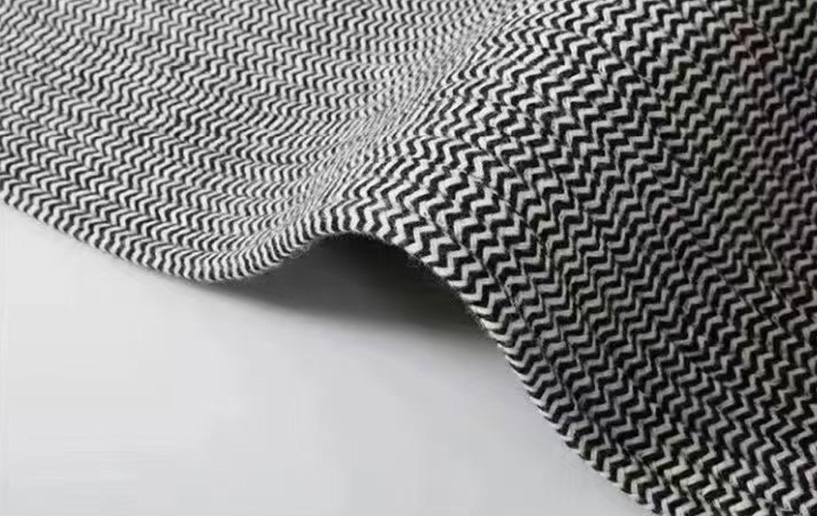
Allow Adequate Drying Time
After shampooing, it’s crucial to give your carpet sufficient time to dry completely. This helps prevent mold growth and musty odors. Depending on humidity levels and airflow, drying can take anywhere from 4 to 24 hours. To expedite the process, increase air circulation by opening windows, using ceiling fans, or employing a dehumidifier.
Avoid Walking on Wet Carpet
Refrain from walking on the carpet until it’s fully dry. Walking on damp carpet can soil it more quickly and may lead to the development of mold or mildew. Additionally, moisture can transfer from the carpet to furniture, potentially causing damage. If necessary, use protective covers under furniture legs to prevent water absorption.
Wait Before Replacing Furniture
After cleaning, wait at least 24 hours before replacing furniture. This allows the carpet to dry thoroughly and prevents furniture from leaving indentations or transferring stains onto the damp carpet.
Vacuum Regularly
Once the carpet is dry, resume regular vacuuming. Vacuuming helps remove dirt and debris that may have settled during the drying process. It’s recommended to vacuum high-traffic areas at least twice a week and other areas weekly to maintain carpet cleanliness and appearance.
Address Spills Promptly
Immediate attention to spills can prevent stains from setting. Blot the area with a clean cloth to absorb excess liquid, then clean the spot using a carpet-safe cleaning solution. Avoid scrubbing, as this can damage carpet fibers. For persistent stains, consider using a homemade solution of vinegar and water or a commercial carpet cleaner approved by the Carpet and Rug Institute.
6. Conclusion
Shampooing your carpet at home can be an effective way to maintain its appearance and longevity. By following the proper steps and using the right tools and solutions, you can achieve professional-looking results. Regular maintenance and prompt attention to spills and stains will keep your carpet looking fresh and clean for years to come.
7. FAQs
Q1: How often should I shampoo my carpet?
A1: It depends on foot traffic and usage. Generally, every 2 to 6 months is recommended.
Q2: Can I use homemade cleaning solutions?
A2: Yes, mixtures like vinegar and water can be effective, but always test on a small area first.
Q3: Do I need a carpet cleaning machine?
A3: While not mandatory, a machine can make the process more efficient and thorough.
Q4: How long should I wait before walking on the carpet after cleaning?
A4: It’s best to wait until the carpet is completely dry, which can take several hours.
Q5: Can I shampoo my carpet too often?
A5: Over-shampooing can wear down carpet fibers. Stick to the recommended frequency based on usage.

